#Hawaii’s Governor | Josh Green
Explore tagged Tumblr posts
Text
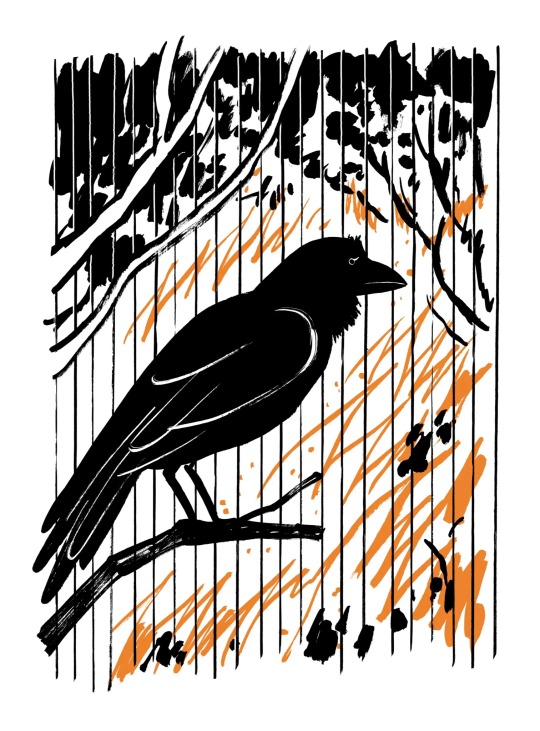
Illustration by João Fazenda
The Burning of Maui
The governor called the fires Hawaii’s “largest natural disaster” ever. They would more accurately be labelled an “unnatural disaster.”
— By Elizabeth Kolbert | August 20, 2023
The ‘alalā, or Hawaiian crow, is a remarkably clever bird. ‘Alalā fashion tools out of sticks, which they use, a bit like skewers, to get at hard-to-reach food. The birds were once abundant, but by the late nineteen-nineties their population had dropped so low that they were facing extinction. Since 2003, all the world’s remaining ‘alalā have been confined to aviaries. In a last-ditch effort to preserve the species, the San Diego Zoo Wildlife Alliance has been breeding the crows in captivity. The alliance keeps about a third of the birds—some forty ‘alalā—at a facility outside the town of Volcano, on the Big Island, and the rest outside the town of Makawao, on Maui. Earlier this month, the Maui population was very nearly wiped out. On the morning of August 8th, flames came within a few hundred feet of the birds’ home and would probably have engulfed it were it not for an enterprising alliance employee, one of her neighbors, and a garden hose.
According to the U.S. Fish and Wildlife Service, “many factors” contributed to the ‘alalā’s decline, including habitat destruction, invasive species, and the effects of agriculture on the landscape. Owing to these developments, Hawaii’s native fauna in general is in crisis; the state has earned an unfortunate title as “the extinction capital of the world.” Of the nearly hundred and fifty bird species that used to be found in Hawaii and nowhere else, two-thirds are gone. Among the islands’ distinctive native snails, the losses have been even more catastrophic.
Last week, as the death toll from the fires in West Maui continued to mount—late on Friday, the number stood at a hundred and eleven—it became clear that the same “factors” that have decimated Hawaii’s wildlife also contributed to the deadliness of the blazes. Roughly a thousand people have been reported as still missing, and some two thousand homes have been destroyed or damaged. The worst-hit locality, the town of Lahaina, which lies in ruins, was built on what was once a wetland. Starting in the mid-nineteenth century, much of the vegetation surrounding the town was cleared to make way for sugar plantations. Then, when these went out of business, in the late twentieth century, the formerly cultivated acres were taken over by introduced grasses. In contrast to Hawaii’s native plants, the imported grasses have evolved to reseed after fires and, in dry times, they become highly flammable.
“The lands around Lahaina were all sugarcane from the eighteen-sixties to the late nineteen-nineties,” Clay Trauernicht, a specialist in fire ecology at the University of Hawaii at Mānoa, told the Guardian. “Nothing’s been done since then—hence the problem with invasive grasses and fire risk.”
Also contributing to the devastation was climate change. Since the nineteen-fifties, average temperatures in Hawaii have risen by about two degrees, and there has been a sharp uptick in warming in just the past decade. This has made the state more fire-prone and, at the same time, it has fostered the spread of the sorts of plants that provide wildfires with fuel. Hotter summers help invasive shrubs and grasses “outgrow our native tree species,” the state’s official Climate Change Portal notes.
As Hawaii has warmed, it has also dried out. According, again, to the Climate Change Portal, “rainfall and streamflow have declined significantly over the past 30 years.” In the weeks leading up to the fires in West Maui, parts of the region were classified as suffering from “severe drought.” Meanwhile, climate change is shifting storm tracks in the Pacific farther north. Hurricane Dora, which made history as the longest-lasting Category 4 hurricane on record in the Pacific, passed to the south of Maui and helped produce the gusts that spread the Lahaina fire at a speed that’s been estimated to be a mile per minute.
After visiting the wreckage of Lahaina, Hawaii’s governor, Josh Green, called the Maui fires the “largest natural disaster Hawaii has ever experienced.” In fact, the fires would more accurately be labelled an “unnatural disaster.” As David Beilman, a professor of geography and environment at the University of Hawaii at Manoa, recently pointed out, for most of Hawaii’s history fire simply wasn’t part of the islands’ ecology. “This Maui situation is an Anthropocene phenomenon,” he told USA Today.
A great many more unnatural disasters lie ahead. Last month was, by a large margin, the hottest July on record, and 2023 seems likely to become the warmest year on record. Two days after Lahaina burst into flames, the National Oceanic and Atmospheric Administration issued a revised forecast for the current Atlantic hurricane season, which runs through the end of November. The agency had been predicting a “near-normal” season, with between five and nine hurricanes. But, because of record sea-surface temperatures this summer—last month a buoy in Manatee Bay, south of Miami, registered 101.1 degrees, a reading that, as the Washington Post put it, is “more typical of a hot tub than ocean water”—noaa is now projecting that the season will be “above normal,” with up to eleven hurricanes. Rising sea levels and the loss of coastal wetlands mean that any hurricanes that make landfall will be that much more destructive.
A few days after noaa revised its forecast, officials ordered the evacuation of Yellowknife, the capital of Canada’s Northwest Territories. A wildfire burning about ten miles away would, they feared, grow to consume the city. The Canadian Broadcasting Corporation called the evacuation order “extraordinary.” This summer has been Canada’s worst wildfire season on record, and, at times, the smoke has spread all the way to Europe. There are currently something like a thousand active fires in the country.
Two days after the Yellowknife evacuation was ordered, another Pacific hurricane—Hilary—intensified into a Category 4 storm. Hilary was being drawn north by a “heat dome” of high pressure over the central Plains, which was expected to bring record temperatures to parts of the Midwest. The storm’s unusual track put some twenty-six million people in four states—California, Utah, Nevada, and Arizona—under flash-flood watches.
How well humanity will fare on the new planet it is busy creating is an open question. Homo sapiens is a remarkably clever species. So, too, was the ‘alalā. ♦
— Published in the Print Edition of the August 28, 2023, New Yorker Issue, with the Headline “Fire Alarm.”
#Maui#Natural Disaster | Un-natural Disaster#Elizabeth Kolbert#The New Yorker#Alalā | Hawaiian Crow#San Diego Zoo Wildlife Alliance#U.S. Fish and Wildlife Service#Lahaina#Clay Trauernicht | University of Hawaii at Mānoa#Climate Change Portal#Hawaii’s Governor | Josh Green#David Beilman | University of Hawaii at Manoa#Anthropocene Phenomenon#National Oceanic and Atmospheric Administration#Atlantic Hurricane 🌀#Manatee Bay | South of Miami#Yellowknife | Canada’s 🇨🇦 Northwest Territories#Europe#Pacific Hurricane 🌀#Mid-West | California | Utah | Nevada | Arizona#Fire 🔥 Alarm 🚨
3 notes
·
View notes
Text
Hawaii Governor Josh Green – How is his Time Period Astrologically?

View On WordPress
0 notes
Text
“As Kennedy pushed his anti-vaccination campaign — which Green has referred to as disinformation — the inoculation rate plummeted to 31% and the measles virus spread. Samoan leaders asked the Hawaii governor for help, so he went to their island with dozens of health care providers to help vaccinate as many people as possible. By this time, there were approximately 5,000 confirmed cases of measles, Green said, and the outbreak would lead to more than 80 deaths, most of them among children.
“This is no joke when you see pictures of a child with measles, when there are no hospitals around, when there are no ventilators to keep them alive,” said the Hawaii governor. “We witnessed a child literally dying in front of us, just moments as we came into the village. ... She was still warm when I put my hands on her face.”
#rfk jr killed 80 people#rfk jr will kill you and your kids#rfk jr will cause massive disease outbreaks#rfk jr is not a doctor or medical professional#anti-vaxx assholes#Qanon assholes#republican assholes#maga morons#trump sycophants#maga cult#rfk jr caused a measles outbreak that killed in Samoa
165 notes
·
View notes
Text
Hawaii on Thursday agreed to take action to decarbonize its transportation system by 2045 to settle a lawsuit by 13 young people alleging the U.S. state was violating their rights under its constitution with infrastructure that contributes to greenhouse gas emissions and climate change.
Democratic Governor Josh Green announced the "groundbreaking" settlement at a news conference attended by some of the activists and lawyers involved in the lawsuit, which they called the first-ever youth-led climate case seeking zero emissions in transportation.
23 notes
·
View notes
Text
Just Joshing
It may have been a bad election for Democrats, but it has been a very good era for Jewish politicians named Josh. My JTA colleague Andrew Lapin writes about the explosion of Jewish Joshes in high office, including North Carolina Governor-elect Josh Stein, Pennsylvania’s Gov. Josh Shapiro and Hawaii’s Gov. Josh Green. And U.S. Rep. Josh Gottheimer last week announced his candidacy for governor of New Jersey!
“If he wins his race next year,” writes Andrew, “fully 8% of all governor’s mansions in the country would be occupied by Democratic Jewish Joshes.”
What’s it all mean? Probably nothing. Is it fun? Absolutely.
If you want to hear from one of the Joshes directly, JTA is hosting an online event with Shapiro on Dec. 5 at 6:30 pm ET. He’ll be in conversation with Ami Eden, CEO and executive editor of 70 Faces Media, our parent company.
Go here for more information.
9 notes
·
View notes
Text
Josh Green, 9th Governor of Hawaii
(Source)
#josh green#oprah#oprah winfrey#lahaina#maui#hawaii#wildfire#2023#blue#blue roof#project blue beam#agenda 2030#event 201#one world government#the great reset#nwo#new world order#illuminati#usa#united states#america#china#north korea#south korea#chile#prepper#survivalist#independent#news#tiktok
3 notes
·
View notes
Text
"THIS IS FOR US, GENOCIDE"
NATIVE HAWAIIANS FEAR MAUI WILDFIRE DESTRUCTION WILL LEAD TO THEIR CULTURAL ERASURE
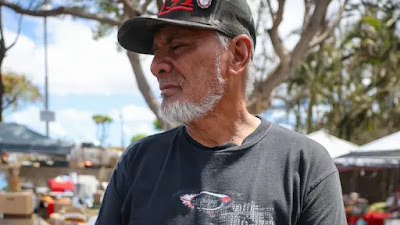
CBC News - August 17, 2023
Keʻeaumoku Kapu has been handing out water, clothes, and emergency supplies to families in need out of the Walgreens parking lot in Lahaina, Maui. He said it is a way to keep himself occupied while he grieves the losses of his community. "I'm afraid we're not going to recover from this," said Kapu, speaking to CBC from his cellphone at the distribution centre Monday. Kapu is a Kanaka Maoli (a Hawaiian word for their Indigenous people) community leader in Lahaina, and head of the Nā ʻAikāne o Maui Cultural Center — which was destroyed by the fire that ripped through Lahaina. While members of the community are still grappling with their immediate needs and the death toll from the fire is still being counted, Kapu said he is "frantic" to make sure he is included in the conversations that are happening about what is next for Lahaina. "I'm hoping that we can get over this hurdle, but at the same time the fear of being erased ..." said Kapu. "Because our island is now turned into a cheaper commodity because there's nothing more important to save here, you have people coming in willing to buy burned-out places." Maui land grabs Kapu said his family and other members of his community have been contacted by realtors asking to buy their burned-up property. The office of the governor of Hawaii released a statement warning Maui residents about predatory buyers trying to capitalize on their fear and the financial uncertainty for those who have lost their homes. In a press conference Wednesday, Governor Josh Green said he is working with the attorney general to put a moratorium on property sales in West Maui. Social media posts from residents are pleading with people to not sell their properties to these realtors, fearing it will lead to Native Hawaiians being displaced from their homelands. A non-profit organization called Hawai'i Alliance for Progressive Action has started an online petition to call on governments to use their powers to stop Maui land grabs, support displaced families and ensure decisions are made with Native Hawaiians at the table. Kapu is urging people not to sell but is worried that people's fear and desperation may drive them to accept these offers.
"You're gonna make our children tomorrow orphans within their own land," said Kapu. Lahaina holds deep cultural significance to the Hawaiian people and was once the capital of the Hawaiian kingdom. The city is where King Kamehameha III had his royal residence and modernized the Hawaiian central government with the creation of Hawaii's constitutional order. Many Hawaiians still recognize it as the original capital today, long after the capital was moved to Honolulu in 1845. The fire destroyed Lahaina's historic Front Street, where the cultural centre Kapu ran was located. Inside, the building held many cultural artifacts, like feather capes and helmets, implements, maps and documents. They were all destroyed. "Our place was a living place, it was a living museum. It was things that you could actually touch, books that you could actually read, maps that showed a lot of families where they originated from," said Kapu. But the loss is bigger than that. Kapu describes the centre as a gathering place for Indigenous people internationally, where culture was shared for the next generations and people could learn from each other. Kapu is heartbroken over the loss, and holds himself responsible for the care of the objects inside, though he barely escaped trying to save it, only having time to grab his laptop as he ran out. Ten minutes later the building was engulfed in flames. "For Lahaina, I'm afraid what this place can turn into now," said Kapu, who worries the historic buildings that have been lost could be replaced by private development. "This is, for us, genocide."
Maui Fires Linked To Colonization The devastation of the Maui fires is directly tied to colonial greed, said Uahikea Maile, who is Kanaka Maoli from Maunawili, Oahu, and an assistant professor of Indigenous politics in the department of political science at the University of Toronto. Maile said pre-colonial Lahaina was a wetland ecosystem abundant with life and that was one of the reasons it was chosen for the royal residence. But Maile said in the late 19th and early 20th centuries white-owned sugar plantations on Maui started to illegally divert water to their crops, drying up the wetlands. "It's really devastating to think about the situation that over time transformed this place because it was strategically and purposefully altered to feed colonial forms of profiteering and wealth accumulation and greed," said Maile. These plantations also introduced non-native plant species for animal grazing that have helped fuel the Maui fires, said Maile. "The question of what to do next? How to heal? How to regenerate? And how to rebuild? Is a really crucial one that is on the minds of everyone," said Maile. Maile can see the island's colonial history repeating itself with realtors exploiting the wildfire devastation to generate future wealth. "It's a really important time in Hawaiian history to ensure that our people have a say in their own lands," said Maile. Native Hawaiian Land Control But how much control Hawaiians have over their land can be a complicated question. The first concept of private land ownership in Hawaii can be traced back to the Mahele, or division of lands, in 1848, where King Kamehameha III divided the land into three categories: Crown, government, and lands for the Hawaiian chiefs. Lance D. Collins is a private practice attorney in Maui who researches Hawaiian law during the American colonial period. Collins is also Kapu's attorney, representing him in cases to show his family's claim to their ancestral land in Kaua'ula Valley. Through the Mahele, about one-third of the land was given to Hawaiian families. That land has been passed down, usually to a person's children, but after several generations and for those without children it has led to confusion over who has interest in the land, said Collins. "Most Hawaiians know which lands they have an interest in, but as long as there's no contest over use, there's no issue," said Collins. The state is obligated to preserve and protect Native Hawaiian traditional and customary rights. Meaning if a private development was proposed on a parcel of land that was used for traditional practices, this right would limit the developers ability to exclude Hawaiians from the land. "There is a tremendous amount of opportunity for the Hawaiian people and for the Lahaina community, and there's also grave, grave danger," said Collins.
28 notes
·
View notes
Text
BREAKING: Maui Issues Level 3 Evacuation Order as New Brush Fire Breaks Out | The Gateway Pundit | by Anthony Scott
One way or another... the elites will get what they want, and at a bargain price.
18 notes
·
View notes
Text
Hawaii Governor DILFs

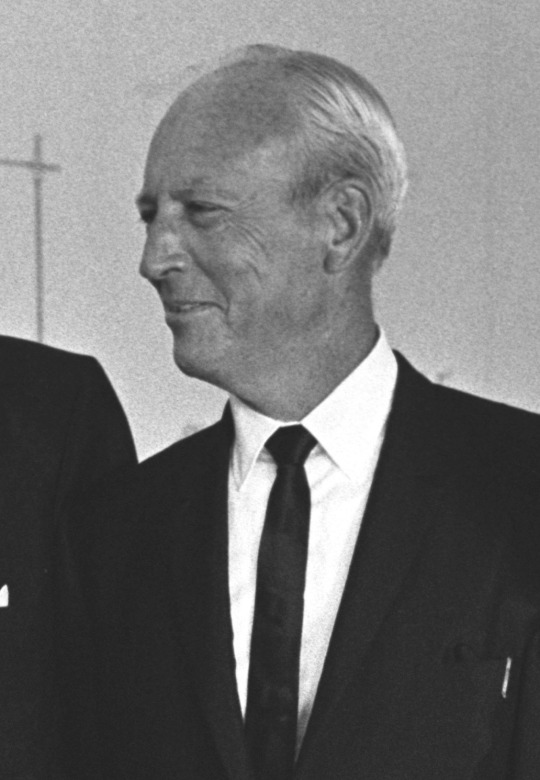

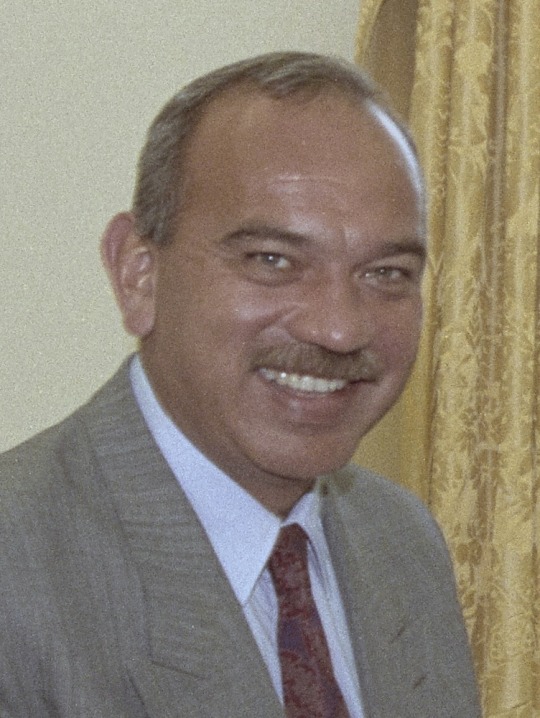
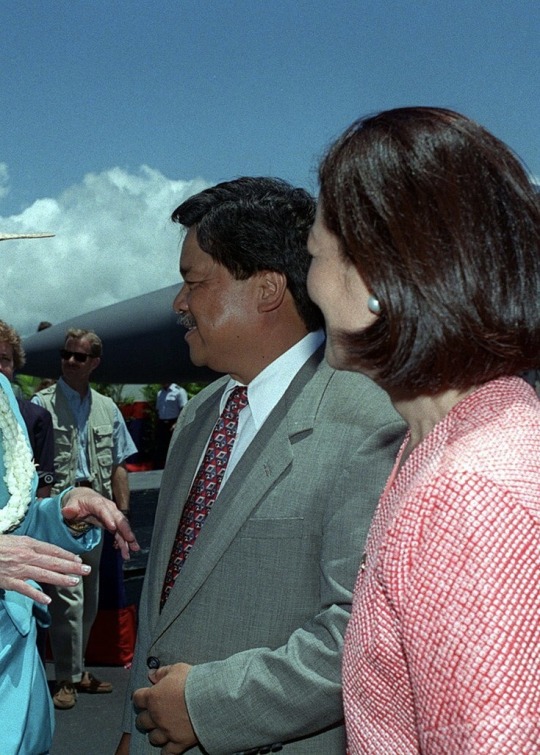

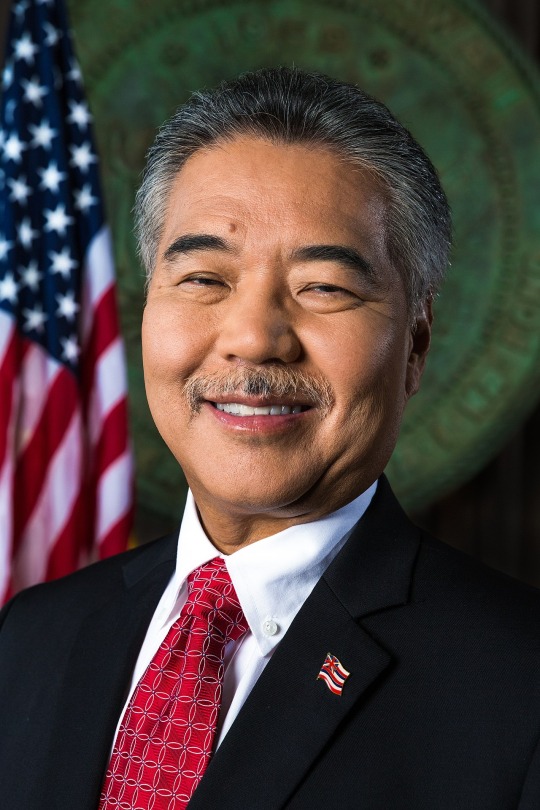
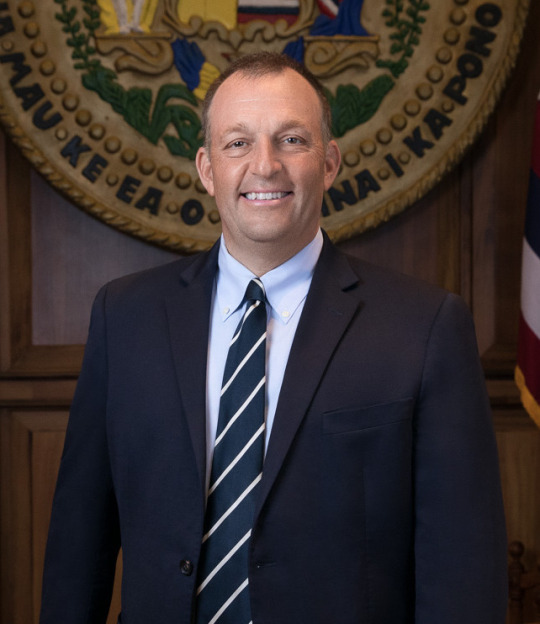
William F. Quinn, John A. Burns, George Ariyoshi, John D. Waiheʻe III, Ben Cayetano, Neil Abercrombie, David Ige, Josh Green
#William F. Quinn#John A. Burns#George Ariyoshi#John D. Waiheʻe III#Ben Cayetano#Neil Abercrombie#David Ige#Josh Green#GovernorDILFs
6 notes
·
View notes
Text
Hawaii Governor Josh Green says Maui will
"build back better"
(6uild 6ack 6etter).
This is clearly the signature of their slaughter...There is no doubt that the Governor and the Deep State were involved in this criminal "natural disaster"...
7 notes
·
View notes
Text
#doomsday#apocalypse#human extinction#climate change#global warming#wild fires#wild fire#maui#wildfire#wildfires
4 notes
·
View notes
Text
Residents from fire-stricken Lahaina on Tuesday delivered a petition asking Hawaii Gov. Josh Green to delay plans to reopen a portion of West Maui to tourism starting this weekend, saying the grieving community is not ready to welcome back visitors. The petition signed by 3,517 people from West Maui zip codes comes amid a fierce and anguished debate over when travelers should return to the region home to the historic town of Lahaina that was destroyed in the deadliest U.S. wildfire in more than a century. At least 98 people died in the Aug. 8 blaze and more than a dozen are missing. The first phase of the plan to reopen Maui to tourists begins Sunday, the two-month anniversary of the disaster. Though many residents say they are not ready, others say they need tourism so they can work in hotels and restaurants to earn a living.
2 notes
·
View notes
Text
Over 100 people are confirmed dead after a wildfire devastated parts of Maui, Hawaii. Families fled from their cars and into the ocean to escape the surging flames that engulfed the town of Lahaina with little warning. What ignited the wildfire remains unknown; multiple factors could have contributed to the disaster.
Hawaiians who survived are now returning to the rubble to begin the slow process of rebuilding their lives. About to visit Maui as a tourist? Postponing that trip is a good idea.
If you want to send help to the people of Maui, the state’s governor, Josh Green, encourages you to be careful and verify charitable groups. Here are five reputable organizations that can deliver your donations to people affected by the wildfire in Hawaii.
Hawaii Community Foundation
Recommended by the state’s governor, the Hawaii Community Foundation supports survivors in multiple ways and provides grants to other organizations working in the community.
According to the group’s website, people have donated over $34 million to their dedicated relief efforts through the Maui Strong Fund. The Hawaii Community Foundation already gave out more than $4 million of those donations to grantees, like the Aloha Diaper Bank, Ka Hale A Ke Ola Homeless Resource Center, and Pacific Birth Collective.
Maui Food Bank
If you live on the island and would like to donate goods, the Maui Food Bank has requested items like rice, baby food, and menstrual products. For those wanting to help from afar, the charity accepts financial donations through its website. The Maui Food Bank claims it funds around four meals for each dollar donated.
Maui United Way
Maui United Way is another group working to help people impacted by the wildfire. The aid covers a range of areas, including counseling for survivors, transportation to the doctor’s office, and assistance replacing burnt IDs. The group accepts online donations for their disaster relief fund.
Council for Native Hawaiian Advancement
Through their Kāko'o Maui Fund, the Council for Native Hawaiian Advancement provides immediate help to survivors. Outside of its disaster relief efforts, the nonprofit offers financial guidance and development opportunities to Hawaiians.
American Red Cross
The Red Cross currently provides on-the-ground relief for people impacted by the Hawaii wildfire. Services include overnight shelters, meals, and reunifications with loved ones who were separated during the disaster. Visit the group’s website to make a donation earmarked to help those impacted in Hawaii. You can also text REDCROSS to 90999 to make a general $10 donation.
5 notes
·
View notes
Text
More details below. This is thrilling, thanks for posting, OP.
"“You have a constitutional right to fight for life-sustaining climate policy and you have mobilized our people in this case,” Josh Green, the Hawaii governor, told the 13 young plantiffs in the case, saying he hoped the settlement would inspire similar action across the country...
“This is an extraordinary, unprecedented victory for the youth plaintiffs,” Michael Gerrard, the faculty director of the Sabin Center for Climate Change Law at Columbia University, told the Guardian.
While Hawaii has long embraced a progressive climate change agenda, with 2045 as a target year for decarbonization, the new settlement is “as big a deal as everyone said it is”, said Denise Antolini, an emeritus professor of law at the University of Hawaii Law School, who has followed climate change litigation for decades.
“It’s written down, it’s enforceable, and that makes all in the difference in the world between a promise and actual implementation,” Antolini said...
The plaintiffs, most of whom are Indigenous, alleged that by contributing to the climate crisis, the state hastened the “decline and disappearance of Hawaii’s natural and cultural heritage”. When the case was filed, the plantiffs were between the ages of nine and 18...
Officials said the legal settlement brings together activists with all three branches of the state’s government to focus on meeting climate change goals, including mobilizing the judicial branch. The court will oversee the settlement agreement through 2045 or until the state reaches its zero emission goals, Rodgers said.
“We have extremely tough goals to hit by 2045 and this is going to make sure we move forward much faster,” Ed Sniffen, the head of the state’s transportation department said at a press conference...
State officials often claim Hawaii is a climate leader. In 2015, it became the first US state to require its electric utilities to zero out its power sector emissions by 2045 – a tall order in a state that has historically obtained most of its energy from oil and coal.
The state legislature has also passed a goal of decarbonizing the transportation sector. And Hawaii’s 2050 sustainability plan calls to make all state vehicles carbon free by 2035.
But the state has moved in the wrong direction. Between 2020 and 2021, carbon emissions in Hawaii increased by more than 16%. The plaintiffs say Hawaii’s department of transportation has missed every interim benchmark to reduce its planet-warming emissions since 2008. And per capita, Hawaii emits more carbon than 85% of countries on Earth, attorneys wrote in the 2022 lawsuit."
-via The Guardian, June 20, 2024
Under what legal experts called a “historic” settlement, announced on Thursday, Hawaii officials will release a roadmap “to fully decarbonize the state’s transportation systems, taking all actions necessary to achieve zero emissions no later than 2045 for ground transportation, sea and inter-island air transportation”, Andrea Rodgers, one of the attorneys representing the plaintiffs in the case, said at a press conference with the governor.
#hawaii#hawai'i#indigenous#climate legislation#climate action#transportation#fossil fuels#carbon emissions#good news#hope
8K notes
·
View notes